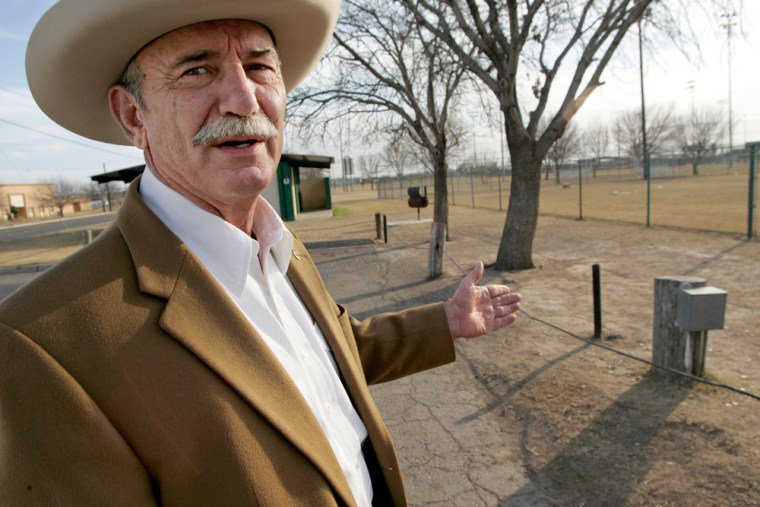Some resistant South Texas landowners and a federal judge have come between the government and its goal of nearly 700 miles of Mexican-border fencing by the end of the year.
U.S. District Judge Andrew Hanen has ordered the government to negotiate with owners over the price of access to the land, an extra step that has slowed the project.
Most landowners in Arizona, California and Texas have allowed the government on their property, but some have refused, prompting the Department of Justice to sue.
Communities along the Rio Grande in South Texas have fought hardest. They fear being cut off from the river and agricultural lands and bristle at the imposition of a plan hatched in Washington, D.C.
Last January, a federal judge ordered Eagle Pass, on the border about 100 miles southwest of San Antonio, to "surrender" 233 acres of city-owned land. The Justice Department sued the city for access to the land.
The government had warned the city, which opposes the fence, it would sue under eminent domain laws to secure access to the property, declaring it is "taking" the property for 180 days.
Federal officials want to determine which properties they need and whether they have to buy the land or seize it through eminent domain. They also want to determine whether alternatives, such as lighting, more Border Patrol agents or technology would work better in some areas.
Most of the nearly 500 property owners in the fence's path gave voluntary access to their land and more than 30 miles of fencing has already been built.
Barry Morrissey, a U.S. Customs and Border Protection spokesman in Washington, D.C., said last week that "we remain optimistic that we can stay on schedule."
Not with the help of Hanen. He has repeatedly denied government motions for immediate access in Texas, and instead held hearings for property owners to voice their concerns before ultimately siding with the government.
One landowner has held up dozens of other cases for more than a month. The outcome could mean further delays for 38 more cases scheduled for hearings this week.
On March 7, Hanen gave the government two weeks to prove it had made a bona fide effort to negotiate a price for temporary access to Cameron County landowner Eloisa Tamez's property.
"I don't consider ... that they've negotiated with me when all they've done is contact me to sign a waiver," said Tamez.
On Tuesday, the government offered $100 for six months of access to Tamez's one acre, a remaining piece of a Spanish land grant to her family in El Calaboz, according to her attorney, Peter Schey.
But Schey said they will not agree upon a price until the government defines access. Will it be intrusive surveying, or will a house on the property have to be torn down or moved?
Schey, president of the Los Angeles-based Center for Human Rights and Constitutional Law, wants the government to negotiate with property owners who voluntarily signed waivers because they did not know they could negotiate.
Schey filed a countersuit on behalf of Tamez and is seeking class-action status for all affected property owners.
"In order for this wall not to be built on a foundation of illegality and lawlessness," property owners must have a chance to take back their waivers, Schey said. "They've been hoodwinked."
The Homeland Security Department is trying to build 370 miles of border fence by the end of the year. A law signed by President Bush and supported by both of Texas' U.S. senators mandated a total of 700 miles of fence along the border.
